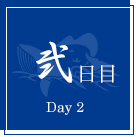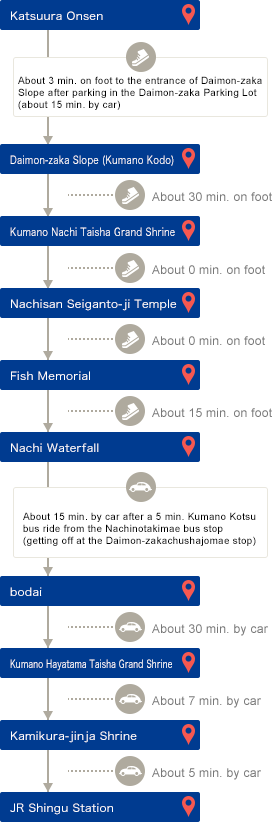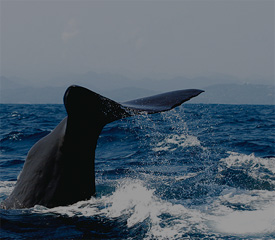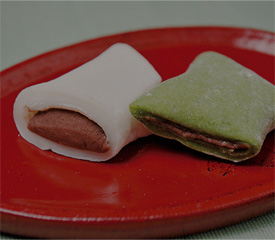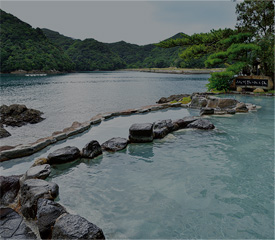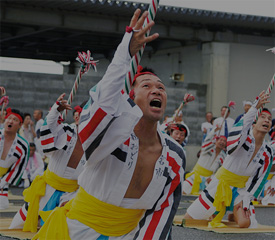This section of the pamphlet introduces a number of model itineraries designed to allow you to explore not only the backdrop of the Japan Heritage story “Living with Whales,” but also other sights in the Kumano area. We start with a two-day, one-night itinerary that includes a visit to the Sacred Sites and Pilgrimage Routes in the Kii Mountain Range, a World Heritage site. Get ready to bathe in famous hot springs, enjoy local delicacies, and experience the unique appeal of the Kumano region.
On the second day, you’ll enjoy a trip along the Kumano Kodo to Sacred Sites and Pilgrimage Routes in the Kii Mountain Range, which have been registered as a World Heritage site.
In the morning, you’ll head to Mt. Nachi. It’s possible to visit these places by car or bus directly from Katsuura, but the best way to experience them is to park your car in the Daimon-zaka Parking Lot at the foot of the mountain and walk in from Daimon-zaka Slope on the Kumano Kodo, which people have used to make pilgrimages to the three sacred areas of Kumano, called Kumano Sanzan, since times long past. At Daimon-zaka Slope, which has retained the beauty of its appearance from those times, you’ll walk along a 600-meter, moss-covered cobblestone path lined with giant Japanese cedar trees as you trace your way into the mountains.
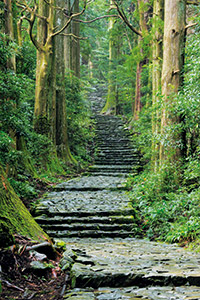
Daimon-zaka Slope on the Kumano Kodo
After reaching the top of the hill and climbing the staircase, which is lined with souvenir shops such as Yamaguchi Kohodo, you’ll arrive at Kumano Nachi Taisha Grand Shrine. Located right next to the shrine is Nachisan Seiganto-ji Temple. Since the two institutions developed together as one of Kumano Sanzan, they are both registered as World Heritage sites.
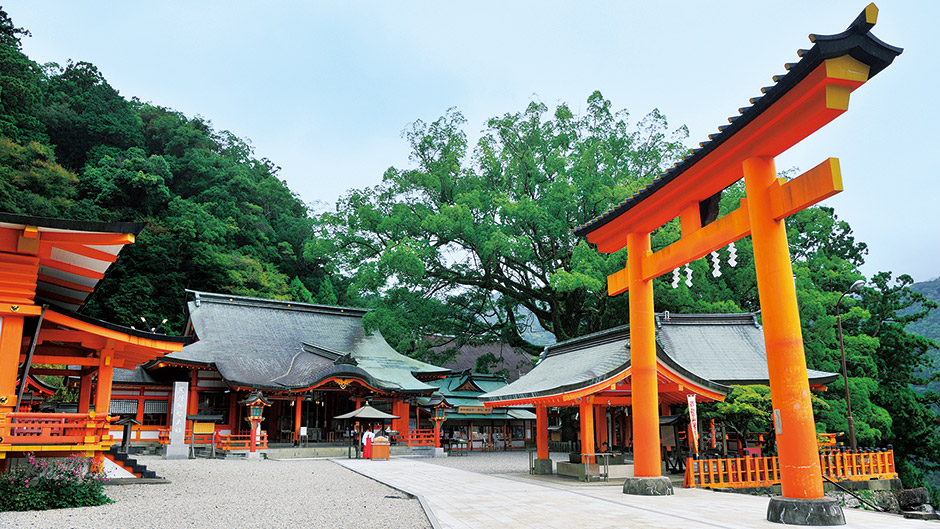
Kumano Nachi Taisha Grand Shrine
First, you’ll visit Kumano Nachi Taisha Grand Shrine. Situated at an elevation of about 400 meters, the shrine’s bracing grounds, which overlook Nachi Bay, are home to a series of magnificent buildings. The main hall, which consists of six wings, has been designated as an Important Cultural Property by the Japanese government.
Nachisan Seigan-ji Temple is known as the first place of Saikoku Kannon Pilgrimage to 33 sacred temples with bodhisattva images in western Japan. Its magnificent main hall is said to have been reconstructed by Toyotomi Hideyoshi, and it has also been designated as an Important Cultural Property by the Japanese government. As you face the hall, you can see the Fish Memorial, which is a registered Japan Heritage site, to the left.
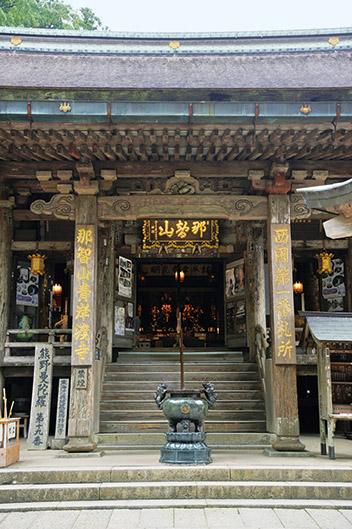
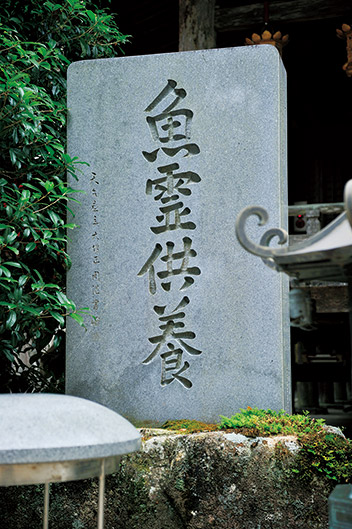
Nachisan Seiganto-ji Temple (left photo)
Fish Memorial (right photo)
Next, you’ll head down the steep cobblestone path to enjoy a view of Nachi Waterfall. It is said that the Nachisan faith originated as a nature worship that revered these enormous falls as a deity. Hiro-jinja Shrine, which is associated with Kumano Nachi Taisha Grand Shrine, stands in front of the falls, and you can admire their sacred flow from a viewing area situated so close to their base that you can feel the spray from the water as it hits the rocks.
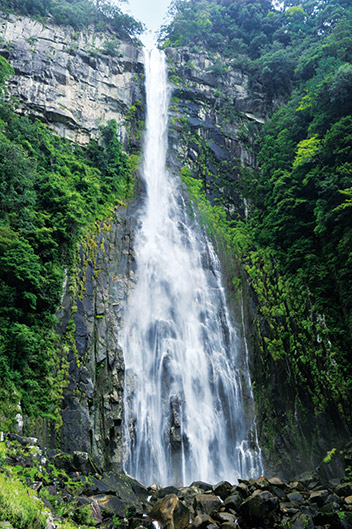
Nachi Waterfall
You’ll get on a bus at the Nachinotakimae stop to head back to the Daimon-zaka Parking Lot (check the schedule in advance as service on the route is infrequent) and then travel by car to bodai in Katsuura, where you’ll enjoy a lunch of fresh tuna.
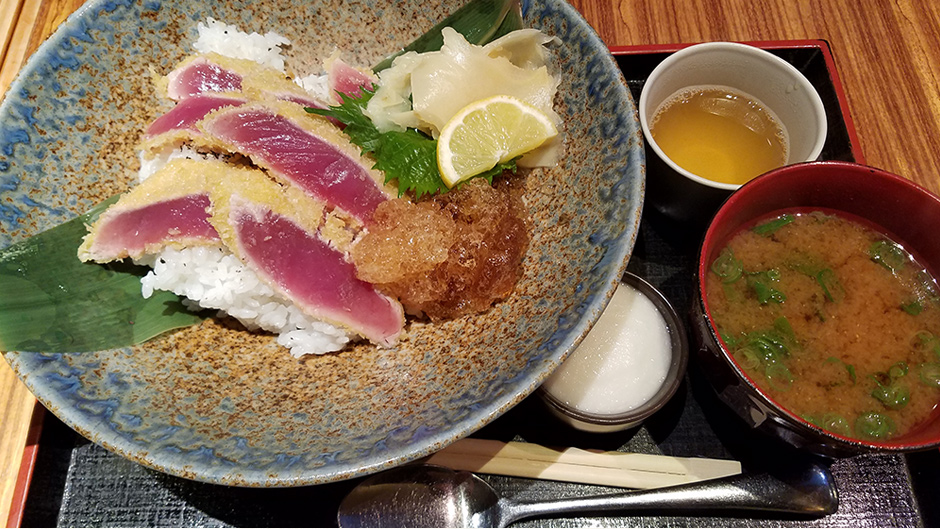
bodai
In the afternoon, you’ll head to Shingu City, where you’ll visit Kumano Hayatama Taisha Grand Shrine, one of Kumano Sanzan. On its grounds, you’ll find brilliant vermillion-colored buildings set against a backdrop of green trees. You’ll also visit Kamikura-jinja Shrine, where the historical origins of Kumano Hayatama Taisha Grand Shrine lie. This ancient shrine is dedicated to the sacred Gotobiki-iwa Rock, an enormous rock located halfway up Mt. Kamikura.
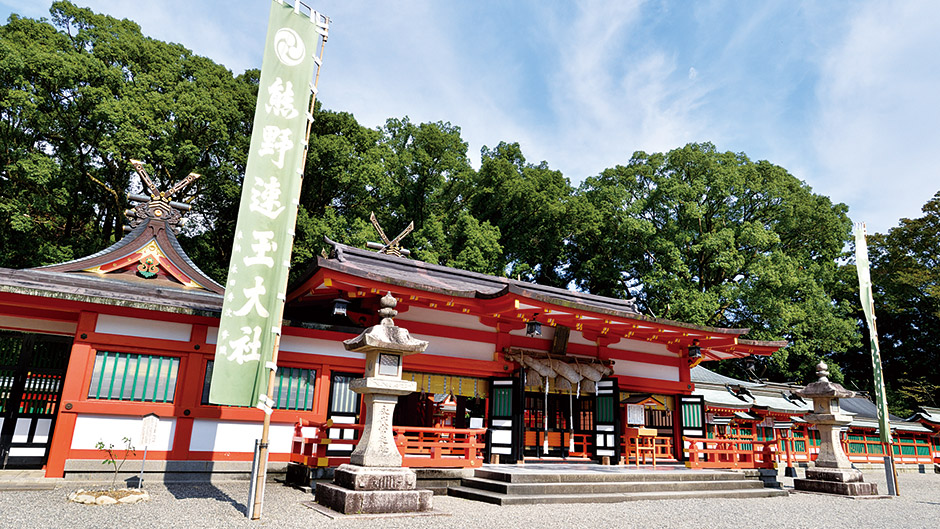
Kumano Hayatama Taisha Grand Shrine
Legend holds that the deities of Kumano originally came down to earth at the site of this rock during the reign of Emperor Keiko and built a new shrine (which became Kumano Hayatama Taisha Grand Shrine) to welcome the deities. Consequently, Kamikura-jinja Shrine is known as the original shrine and Kumano Hayatama Taisha Grand Shrine as the new shrine, and the entire area came to be known as Shingu, meaning “new shrine” in Japanese, as a result.
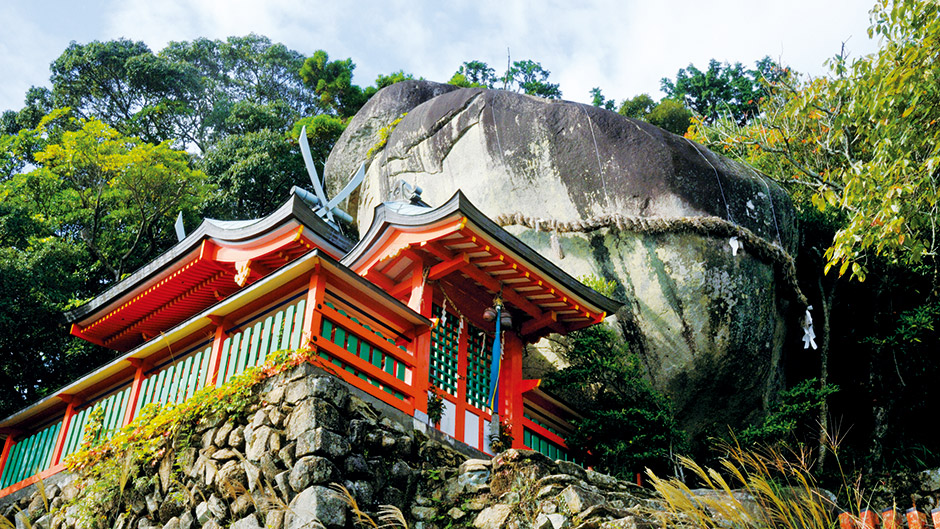
Kamikura-jinja Shrine
After visiting the two shrines, you’ll take a walk in Shingu. Alternatively, you can visit Kumano Hongu Taisha Grand Shrine (located in the Hongu Town of Tanabe), which along with Nachi and Shingu makes up Kumano Sanzan. Kumano Hongu Taisha Grand Shrine is located about one hour by car from Shingu.
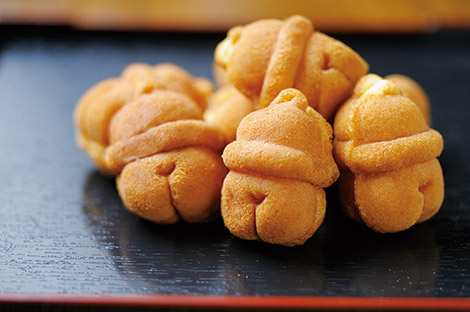
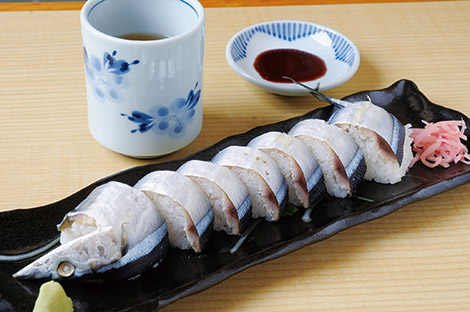
Kobaido (left photo)
Jofuku Zushi Ekimae Branch (right photo)




